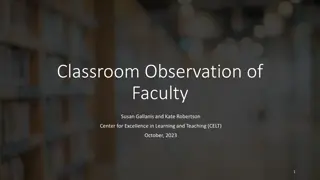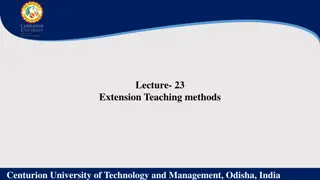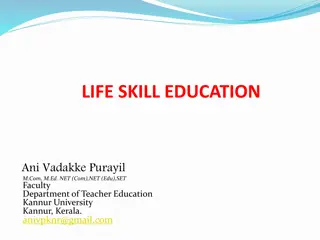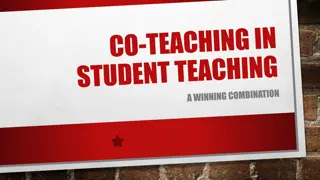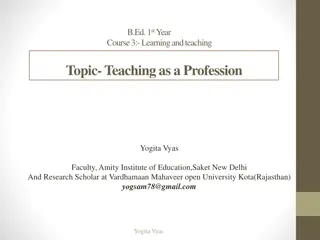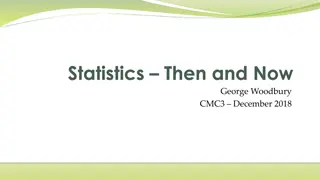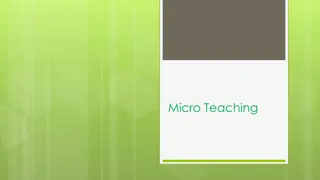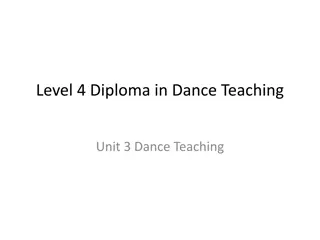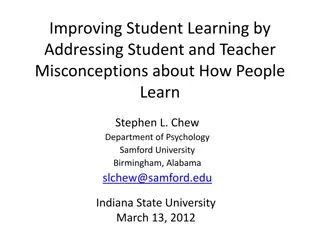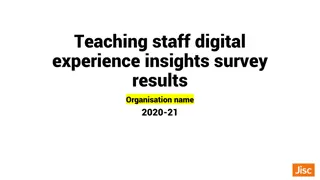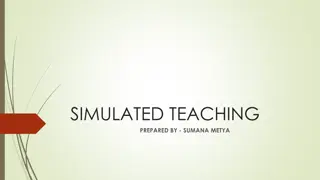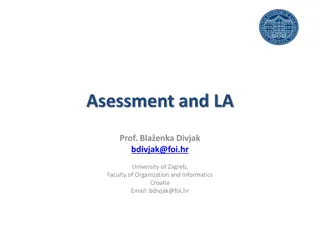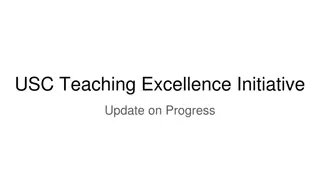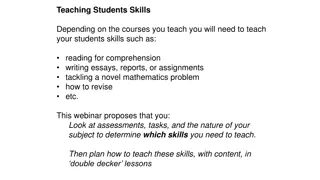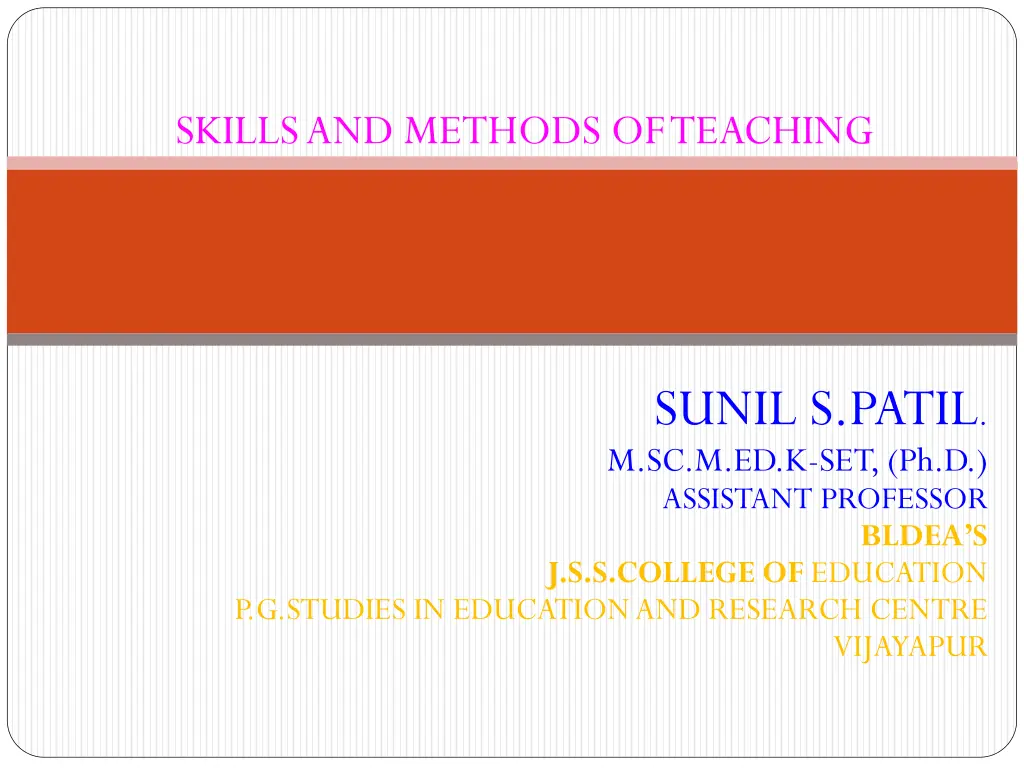
Teaching Skills and Qualities for Effective Educators
Enhance your teaching skills with insights from Sunil S. Patil, Assistant Professor, covering cognitive, technological, and interpersonal skills of teachers, along with the importance of qualities like patience. Discover the art of effective communication in the classroom.
Download Presentation

Please find below an Image/Link to download the presentation.
The content on the website is provided AS IS for your information and personal use only. It may not be sold, licensed, or shared on other websites without obtaining consent from the author. If you encounter any issues during the download, it is possible that the publisher has removed the file from their server.
You are allowed to download the files provided on this website for personal or commercial use, subject to the condition that they are used lawfully. All files are the property of their respective owners.
The content on the website is provided AS IS for your information and personal use only. It may not be sold, licensed, or shared on other websites without obtaining consent from the author.
E N D
Presentation Transcript
SKILLS AND METHODS OF TEACHING SUNIL S.PATIL. M.SC.M.ED.K-SET, (Ph.D.) ASSISTANT PROFESSOR BLDEA S J.S.S.COLLEGE OF EDUCATION P.G.STUDIES IN EDUCATION AND RESEARCH CENTRE VIJAYAPUR
TEACHING IS THE BRAIN OF A SCIENTIST SOUL OF AN ARTIST LEARNING IS WHAT REMAINS AFTER WHAT HAS BEEN LEARNT HAS BEEN FORGOTTEN.
Skill Refers to cognitive technological and interpersonal skills of teacher. Teaching skills The term teaching skills means skills that enable a teacher to increase student learning, achievement, and the ability to apply knowledge effectively convey and explain academic subject matter Effectively teach higher-order analytical, evaluation, problem-solving, and communication skills
skill is an ability and capacity acquired through delibrate,systamatic and sustained Effort to smoothly and adaptively carriout complex activities or job functions involving ideas (cognitive skills) things (technical skills) and people (interpersonal skills) Teaching skills The term teaching skills means skills that enable a teacher to increase student learning, achievement, and the ability to apply knowledge effectively convey and explain academic subject matter Effectively teach higher-order analytical, evaluation, problem-solving, and communication skills.
Qualities Teachers Needs To Inculcate Patience Patience is one of the most important traits of an effective teacher. Every student is different, depending on their age, previous education, personal circumstances and individual needs. A teacher will need to meet certain deadlines, but they also cannot expect every student to progress at the same pace. They need to have the patience and understanding to speak with students, individually if necessary, and help them through any difficulties they might face during the course of their learning. If every student immediately understood what they were taught, teaching would be an easier job but far less rewarding.
Communication Communication is an essential skill in the classroom. The ability to impart information to students and ensure they fully understand tasks is an important one, but it is not the extent of a teacher's communication ability. The best teachers don't simply speak to their students, they engage them and encourage them to participate in group learning. Knowing how to speak to students in an encouraging manner, rather than being patronising or dismissive, will help students develop confidence and make them more willing to join discussions in class.
Organisation A teacher's job would be impossible without organisational skills. Even when working with a rigid curriculum, a teacher needs to know how to make the most of their time and achieve their class objectives in the set time. This includes gathering the necessary resources in advance of the lesson, such as scientific equipment and textbooks, so no time is wasted.This also includes any work that a teacher needs to complete outside of lessons. A teacher might need to mark a large amount of homework, coursework and tests away from the classroom, and they must complete this work promptly to avoid becoming overwhelmed.Thankfully, this kind of organisational work is easier than ever before due to digital technology. Digital planners mean teachers can ensure they set aside the necessary time to complete their tasks and prepare lessons.
Leadership During lessons, a teacher needs to be the leader of their classroom. At the same time, they need to understand the appropriate times to encourage children to participate in discussions and offer their contributions. Understanding how to lead a class full of students is one of the most significant challenges that face teachers as they begin their careers but, with experience, they will realise the techniques that work for them and their students.
Digital skills Computers are increasingly popular in schools, the workplace and at home. Students must be taught how to use computers, but teachers can also utilise technology in their teaching. Software such as Central Management Systems (CMS) and Learning Management Systems (LMS) can be extremely helpful for managing education courses. Other, cloud-based education platforms allow students to access online resources, submit work and seek assistance when they aren't in the classroom.
Problem-solving Teaching is rarely simple. When teaching a class of students, each of whom will have their own educational needs, unpredictable situations will inevitably arise. It is the responsibility of a teacher to look for solutions to a problem or, in situations where that is impossible, to contact somebody who can help. Problem-solving skills might be needed, for example, when devising an alternative lesson plan if the school suffers a power cut. A teacher might also need to find other ways of explaining something to a student who is struggling to grasp a particular concept. Strong problem-solving skills will serve a teacher well throughout their career.
Empathy- it is thinking from the angle of the Learneror perspective of learner. Teacher has to bend down to the level of learner. Empathy is important in the classroom for many of the same reasons as patience. Empathy runs deeper, however, and will be needed in situations that are not strictly related to the school curriculum. A teacher needs to be able to notice when a student is struggling and should be able to offer support to that student.
5E model of Teaching constructivism-The theory of social constructivism was developed by Soviet psychologist Lev Vygotsky (1896-1934). Social constructivism is based on the idea that learners construct new knowledge. Working with new knowledge involves construction, storage or putting new information into memory, and retrieval.
Based on the individual learning experiences learners constuct their knowledge.when learners are indulged in learning they learn better.students should be the proprietors of knowledg.e(black ant) Vygotsky's social development theory asserts that a child's cognitive development and learning ability can be guided and mediated by their social interactions. His theory (also called Vygotsky's Sociocultural theory) states that learning is a crucially social process as opposed to an independent journey of discovery. Steps of 5Emodel lesson Engage The first phase is to engage the student in the learning task. The student mentally focuses on an object, problem, situation, or event. The activities of this phase should make connections to past and future activities. The connections depend on the learning task and may be conceptual, procedural, or behavioral. Asking a question, defining a problem, showing a discrepant event, and acting out a problematic situation are all ways to engage the students and focus them on the instructional activities. The role of the teacher is to present a situation and identify the instructional task. The teacher also sets the rules and procedures for the activity
Once the activities have engaged students, they need time to explore their ideas. Exploration activities are designed so that all students have common, concrete experiences upon which they continue building concepts, processes, and skills. This phase should be concrete and meaningful for the students . The aim of exploration activities is to establish experiences that teachers and students can use later to formally introduce and discuss scientific and technological concepts, processes, or skills. During the activity, the students have time in which they can explore objects, events, or situations. As a result of their mental and physical involvement in the activity, the students establish relationships, observe patterns, identify variables, and question events. The teacher's role in the exploration phase is that of facilitator or coach. The teacher initiates the activity and allows the students time and opportunity to investigate objects, materials, and situations based on each student's own ideas and phenomena. If called upon, the teacher may coach or guide students as they begin constructing new explanations.
Once the activities have engaged students, they need time toExploretheir ideas. Exploration activities are designed so that all students have common, concrete experiences upon which they continue building concepts, processes, and skills. This phase should be concrete and meaningful for the students. The aim of exploration activities is to establish experiences that teachers and students can use later to formally introduce and discuss scientific and technological concepts, processes, or skills. During the activity, the students have time in which they can explore objects, events, or situations. As a result of their mental and physical involvement in the activity, the students establish relationships, observe patterns, identify variables, and question events. The teacher's role in the exploration phase is that of facilitator or coach. The teacher initiates the activity and allows the students time and opportunity to investigate objects, materials, and situations based on each student's own ideas and phenomena. If called upon, the teacher may coach or guide students as they begin constructing new explanations.
Explanation means the act or process in which concepts, processes, or skills become plain, comprehensible, and clear. The process of explanation provides the students and teacher with a common use of terms relative to the learning experience. In this phase, the teacher directs student attention to specific aspects of the engagement and exploration experiences. First, the teacher asks the students to give their explanations. Second, the teacher introduces scientific or technological explanations in a direct and formal manner. Explanations are ways of ordering and giving a common language for the exploratory experiences. The teacher should base the initial part of this phase on the students' explanations and clearly connect the explanations to experiences in the engagement and exploration phases of the instructional model. The key to this phase is to present concepts, processes, or skills briefly, simply, clearly, and directly, and then continue on to the next phase.
Once the students have an explanation of their learning tasks, it is important to involve them in further experiences that apply, extend, or elaborate the concepts, processes, or skills. Some students may still have misconceptions, or they may only understand a concept in terms of the exploratory experience. Elaboration activities provide further time and experience that contribute to learning.
Evaluation - As a practical educational matter, science teachers must assess educational outcomes. This is the phase in which teachers administer tests to determine each student's level of understanding. This also is the important opportunity for students to use the skills they have acquired and evaluate their understanding.
Methods of teaching- it is a systematic way of doing something.it implies an orderly logical arrangement of steps.it is more procedural. Types of methods of teaching-Teacher-centered approach is a term referred to an approach in which teachers play an important and main role in the learning process. Teacher-centered pedagogy is usually understood to involve the use of the lecture as a primary means of communication in the classroom. The goal of the classroom involves the dissemination of a relatively fixed body of knowledge that is determined by the teacher. Lecture, team teaching, Student centred-Learner-centered teaching methods shift the focus of activity from the teacher to the learners. These methods include:Active learning, in which students solve problems, answer questions, formulate questions of their own, discuss, explain, debate, or brainstorm during class. Eg- Experiential learning, buzz, brain storming,etc.


